Project 1
Project 1 Exercises:
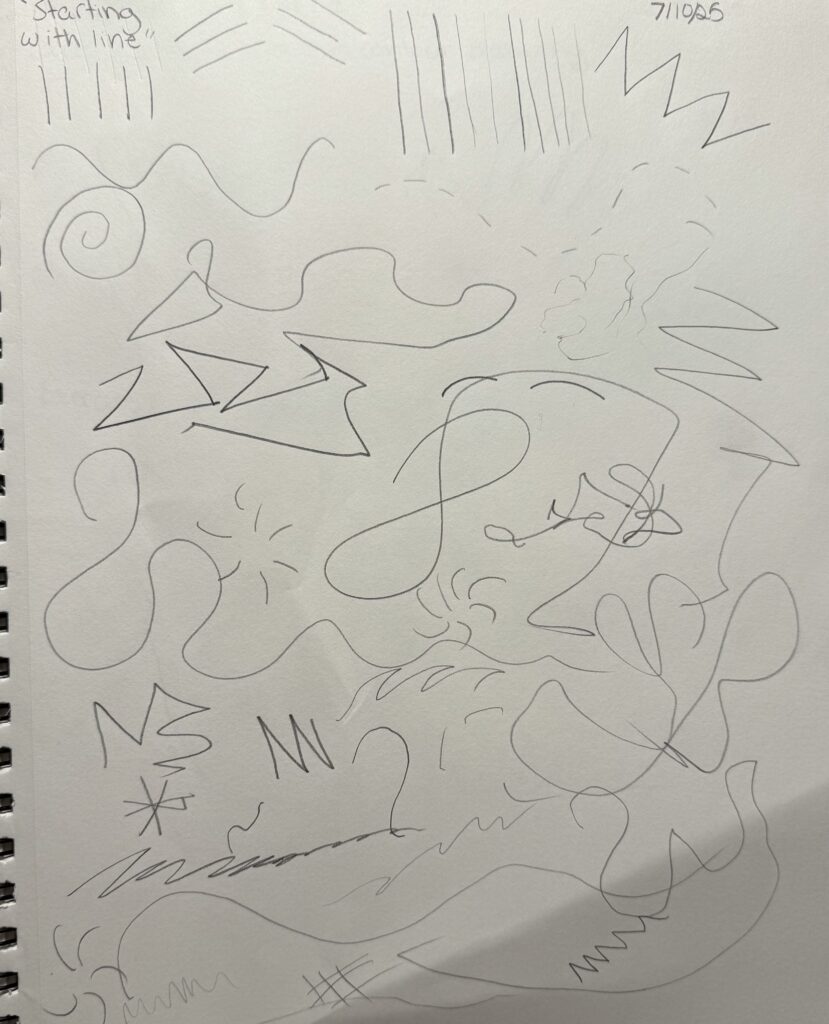
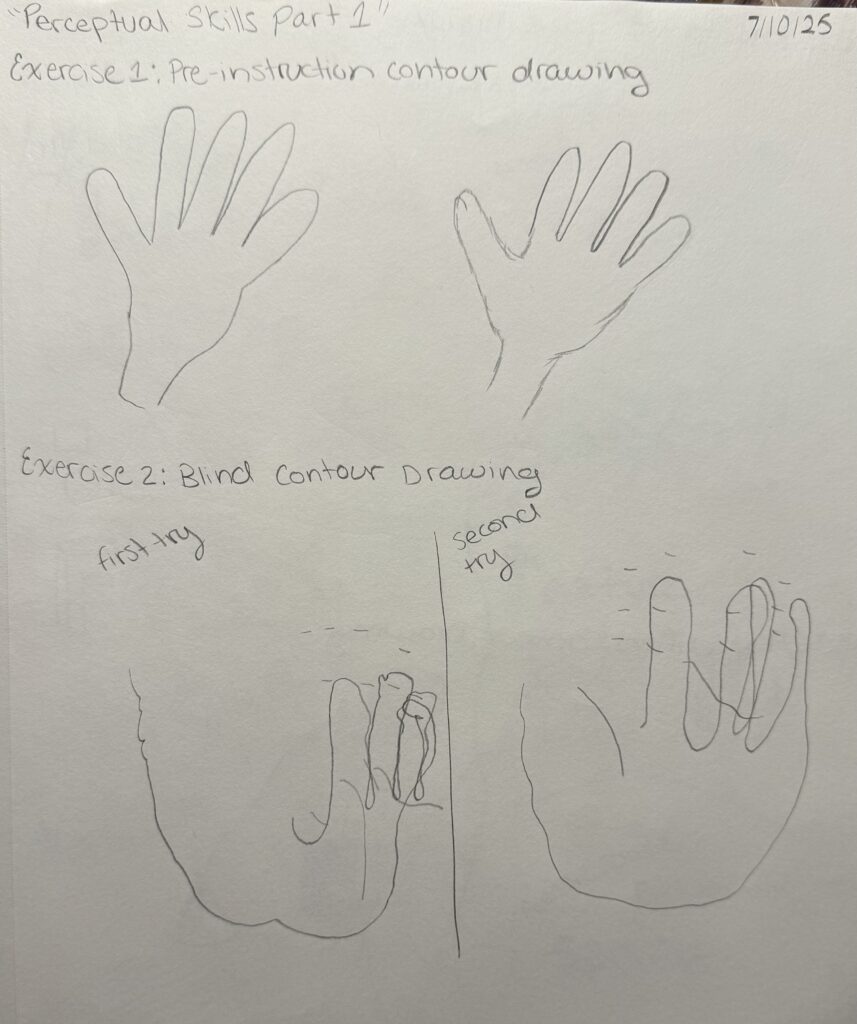
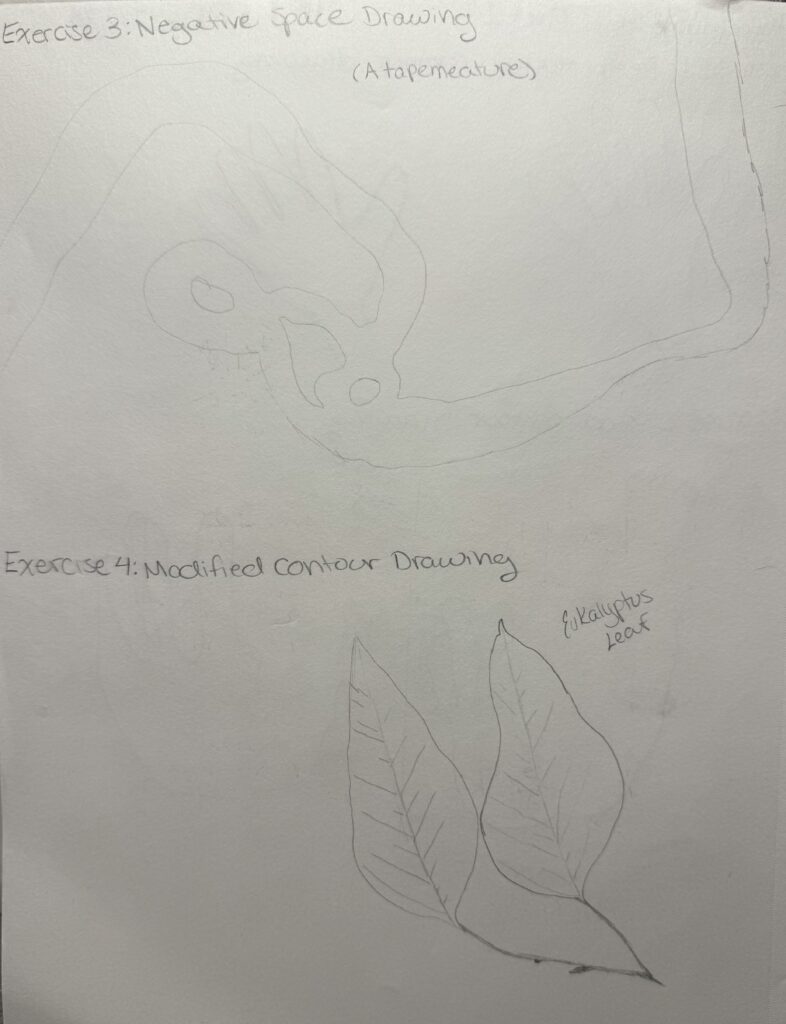
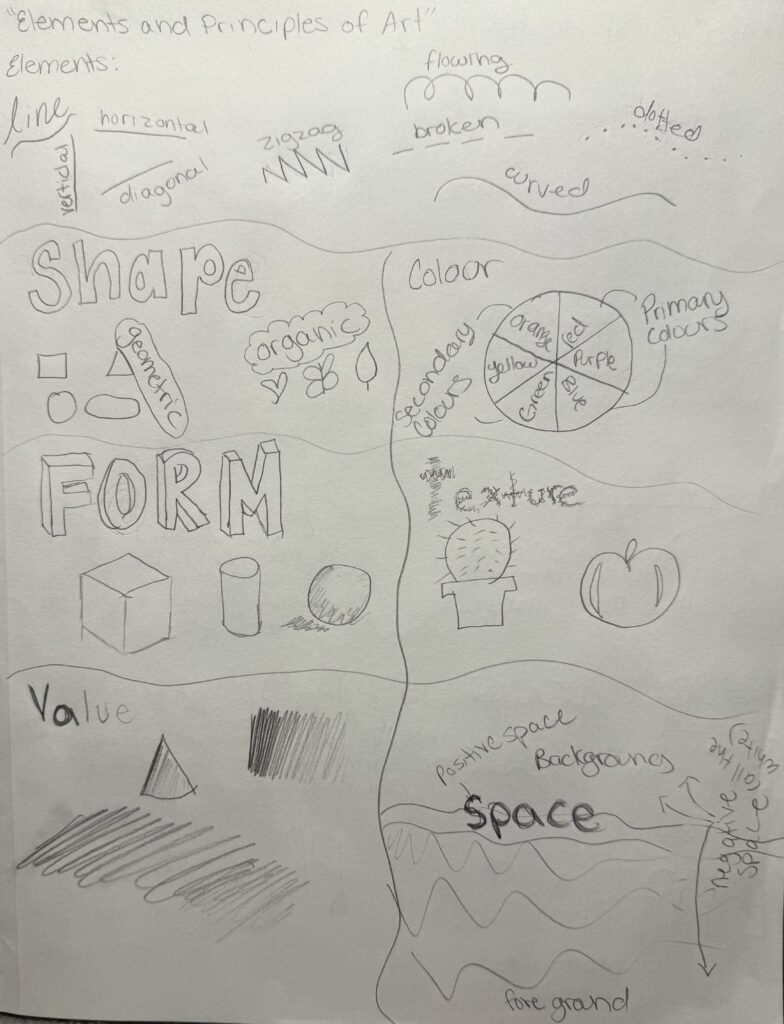
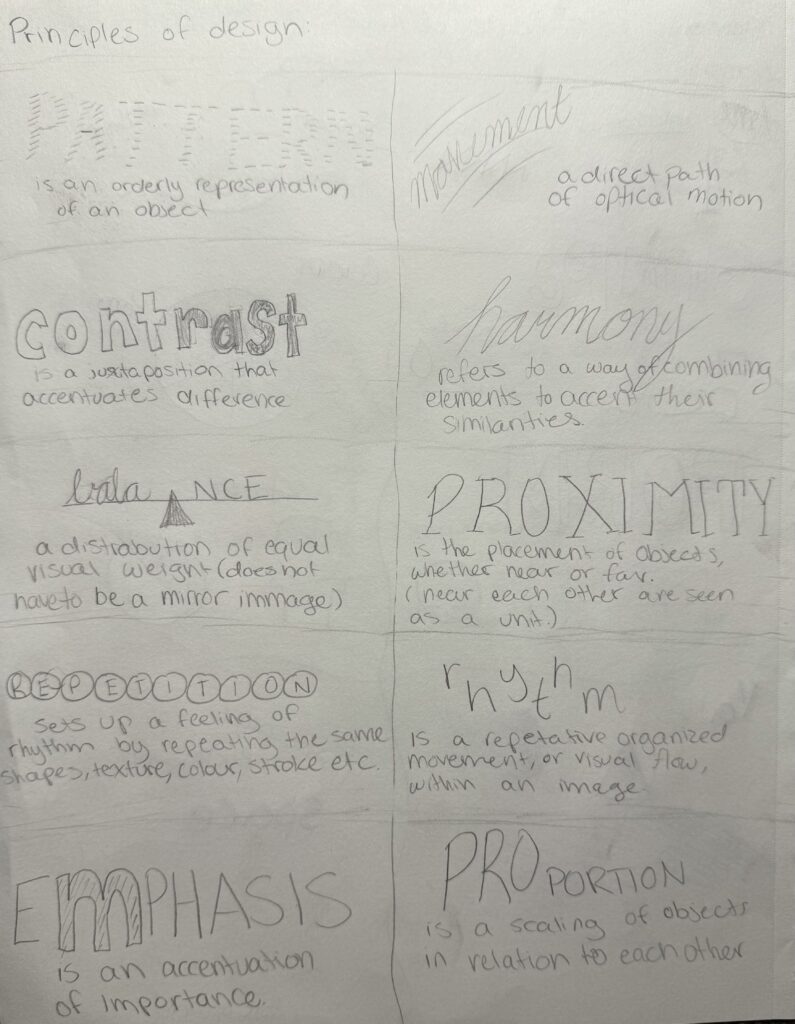
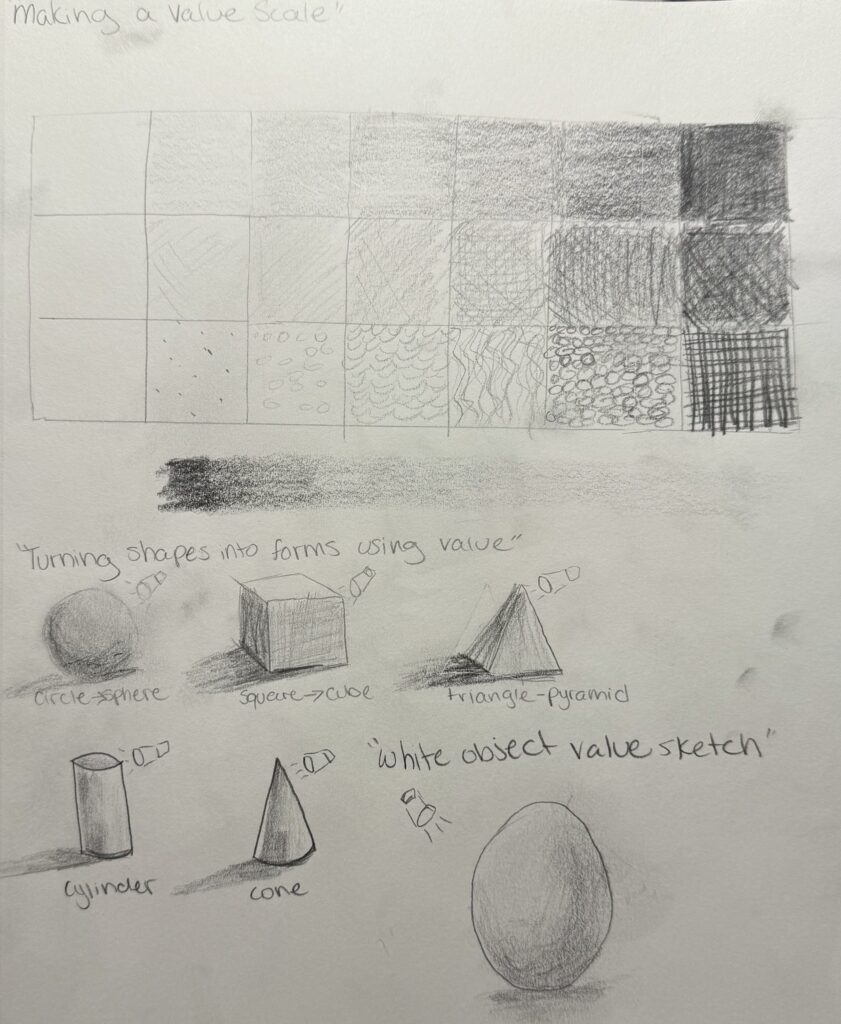
Project 1 Final Drawing:
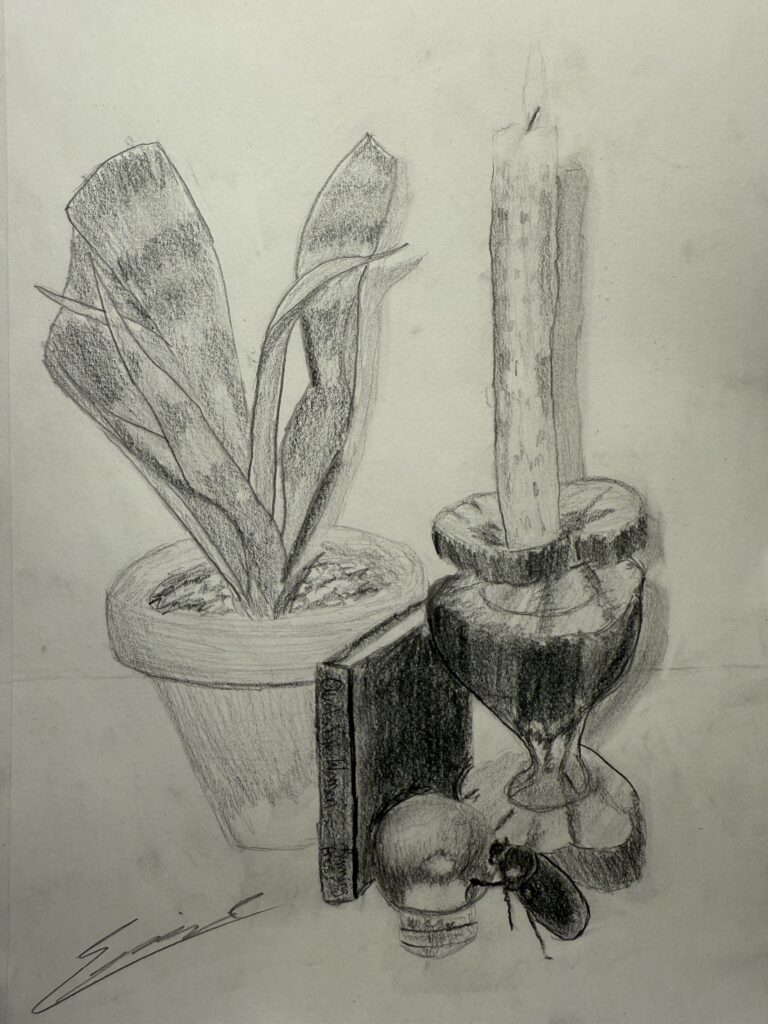
Project 1 Artists Response:
The objects I chose to represent something about myself are a snake plant, a beeswax candle in a wooden holder, a tiny book called Quotable Women, a crystal ball, and a giant dead beetle that I named Beeble.
I included the beeswax candle and wooden candlestick because, no matter how awful I feel, candles have always been a source of comfort. As a little girl, I used to hope for power outages during storms just so we could light the whole house with candles. I was raised by my grandma in my early years, and I’ve never met anyone with more or bigger candles than she had. She used to let me play with the wax, light things on fire, and just be a kid. As an adult, candles still bring me peace. The second it gets dark, I light every candle in the room, put on cozy classical music, and read whatever book I’m enjoying in that moment.
The Quotable Women book reflects how passionate I am about women’s rights. I grew up in the Mormon church and had a lot of negative experiences with misogyny. One of my favorite quotes from the book that really speaks to that experience is: “In passing, also, I would like to say that the first time Adam had a chance he laid blame on the woman.” Nancy Astor (1897 to 1964).
The crystal ball represents my spiritual side. I don’t believe there’s any way to know what happens when we die, so I’ve decided to believe in the things that feel right and bring joy. I like to think everything has a spirit: trees, animals, rivers, and even rocks and crystals. There may not be scientific proof, but I’ve realized I don’t need that. If I believe it, that makes it real to me, and that’s good enough.
I chose the snake plant simply because I couldn’t use my giant snake for a still life drawing. So instead, the plant represents my beloved ball python. And finally, I chose “Beeble“, my giant dead beetle, because he represents the many strange little things that make me who I am. My fiancé gave him to me while we were on a field study in Panama. He could have picked me flowers, but he knew I’d be much more excited about a dead beetle. I’ve always loved the unloved things: bugs, snakes, mud, and I’d even choose rain over sunshine.
Drawing has never been something I’ve felt naturally confident in, so I found this assignment quite challenging. I really enjoyed creating the outline and found the process of drawing the lines surprisingly satisfying, but I struggled with the shading. I kept smudging parts of the drawing by accident, and I often forgot to be mindful of the type of texture I was trying to create. Sometimes I would shade in a way that didn’t match the object, and it was hard to fix once it became too dark. Next time, I think I would choose objects that aren’t quite as dark, just to make the shading process more manageable. I also found drawing from direct observation more difficult than expected. Translating colour into black and grey forced me to think more carefully about value. I had to spend time figuring out how light or dark a colour would look in grayscale, which made the whole process more complex than I thought it would be.
I really appreciated Diane Victor’s work and the process behind her smoke drawings. There’s something so haunting and beautiful about the way the smoke creates a ghost-like effect. I find it fascinating how she uses something as fleeting as smoke, something that usually disappears in seconds and turns it into a permanent piece of art. I also really connected with the way she talks about the fragility of smoke as a medium and how that reflects the fragile nature of the subject matter in her work. The idea of capturing something so delicate and making it last feels really powerful.
Project 2
Project 2 Exercises:
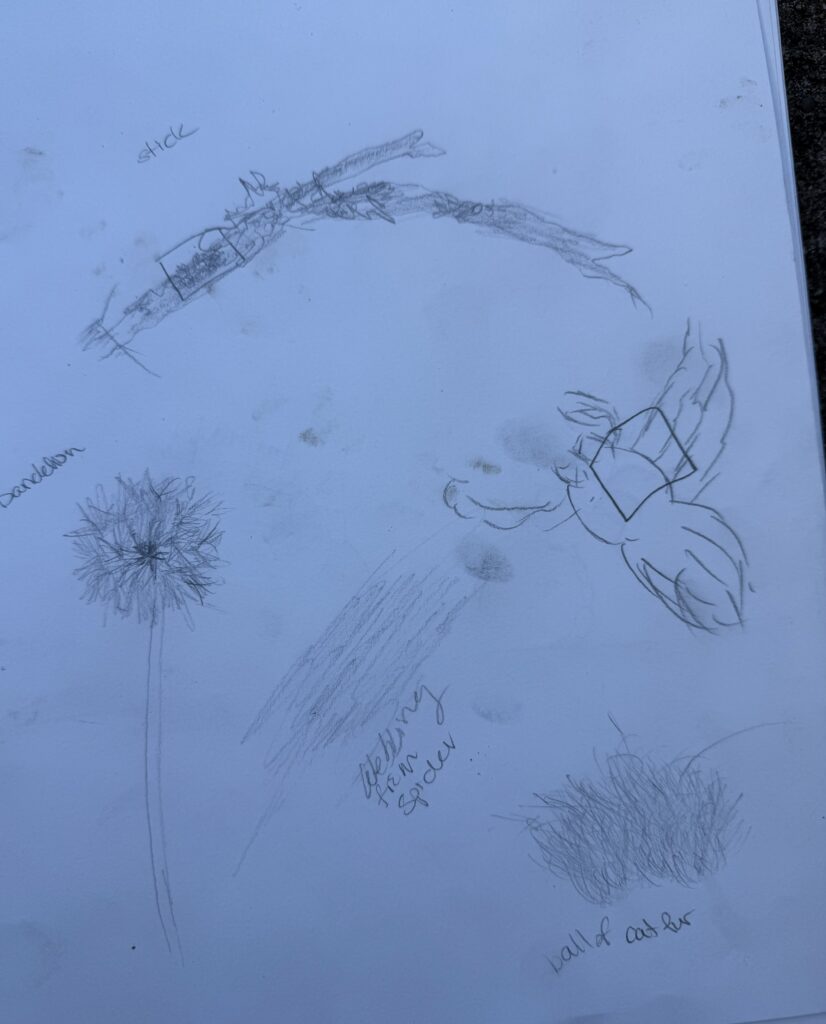
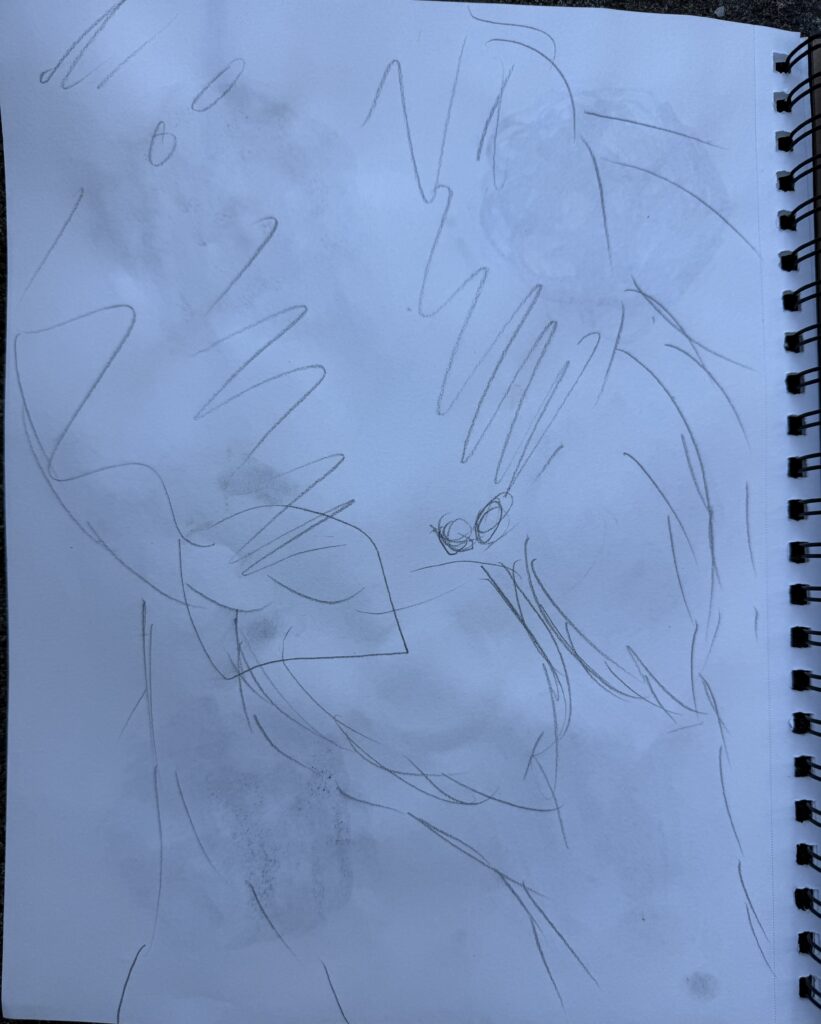
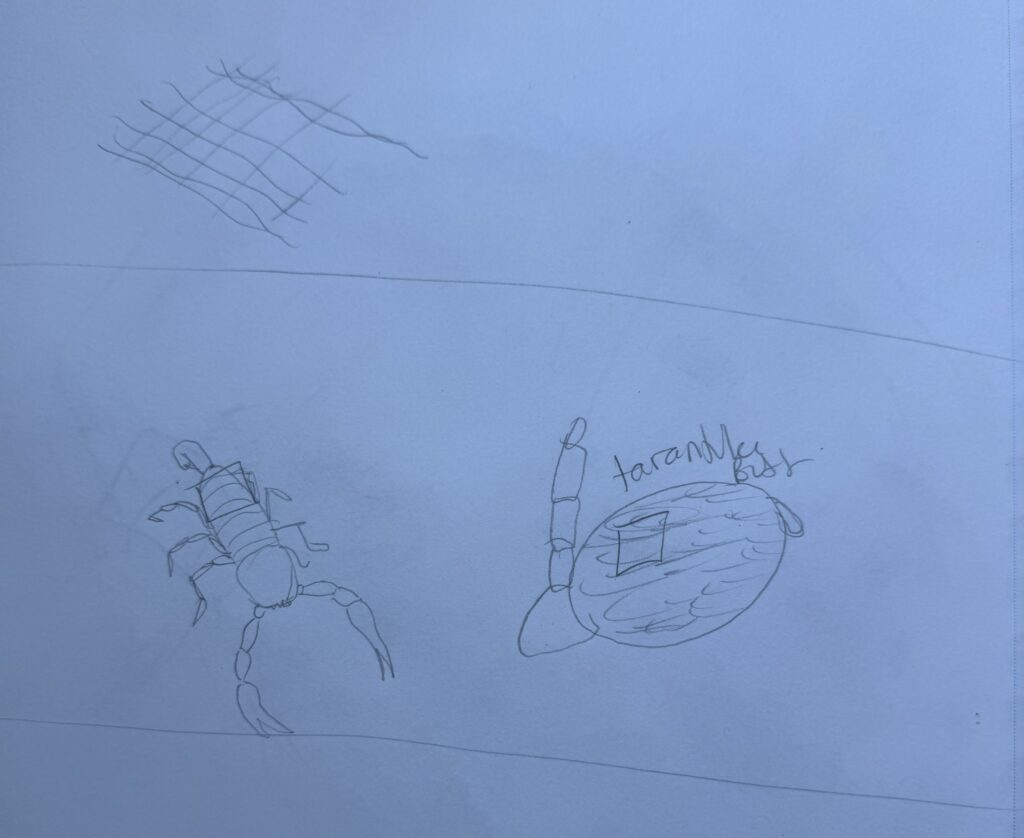
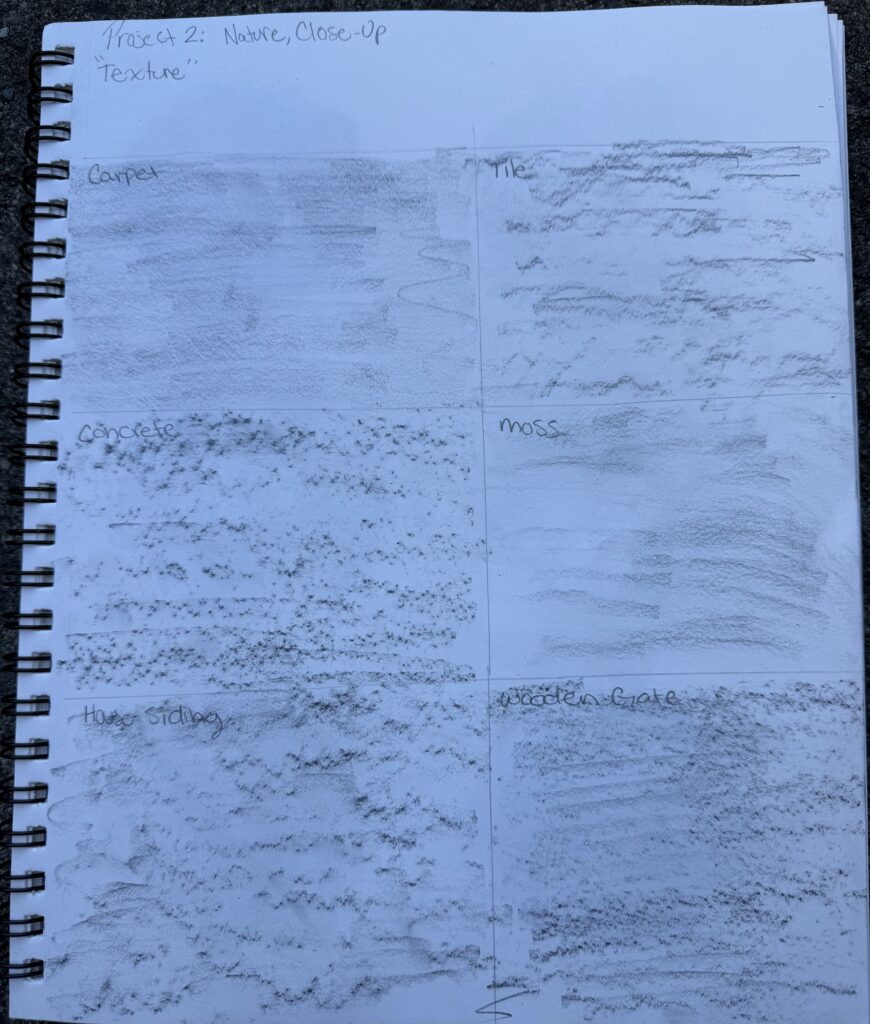
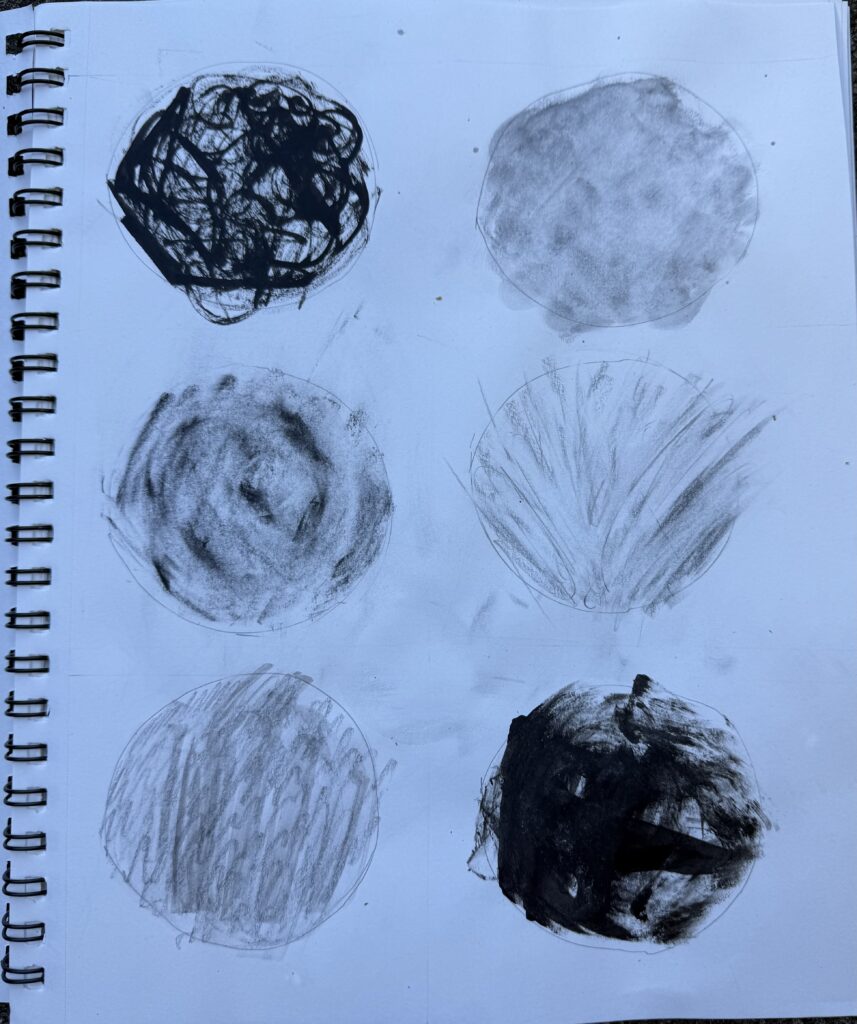
Project 2 Final Drawing:

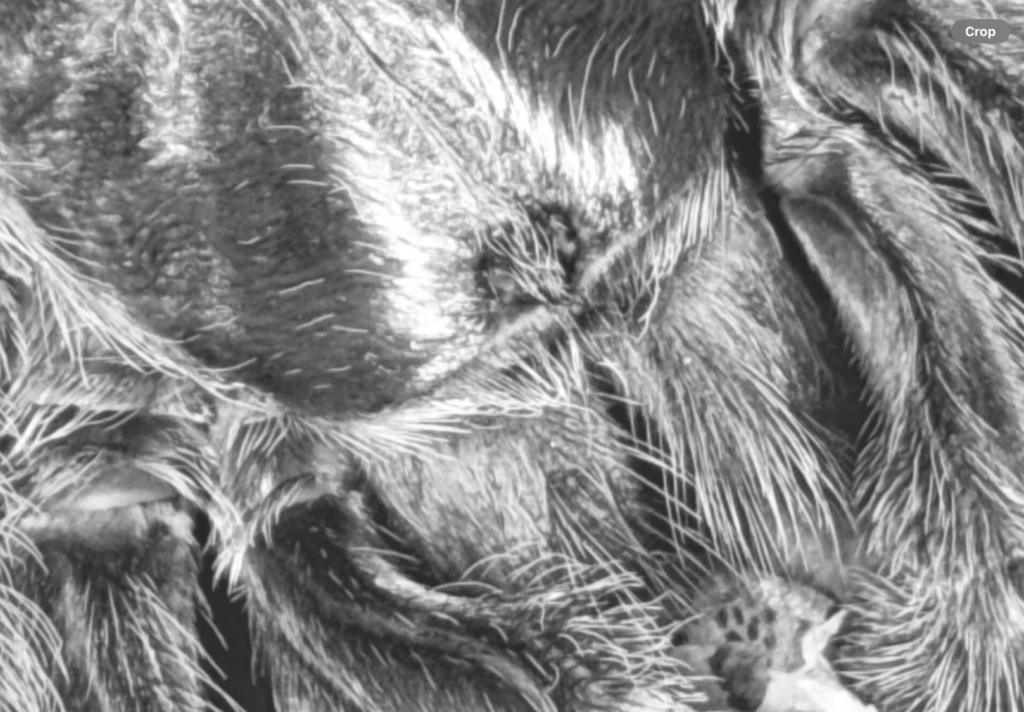
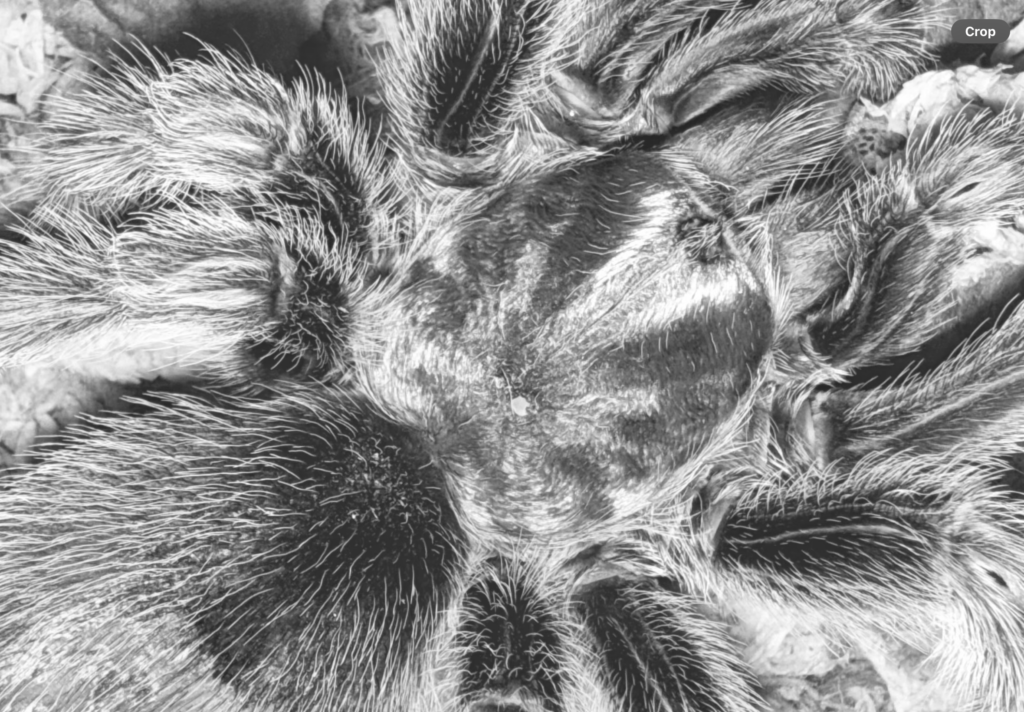
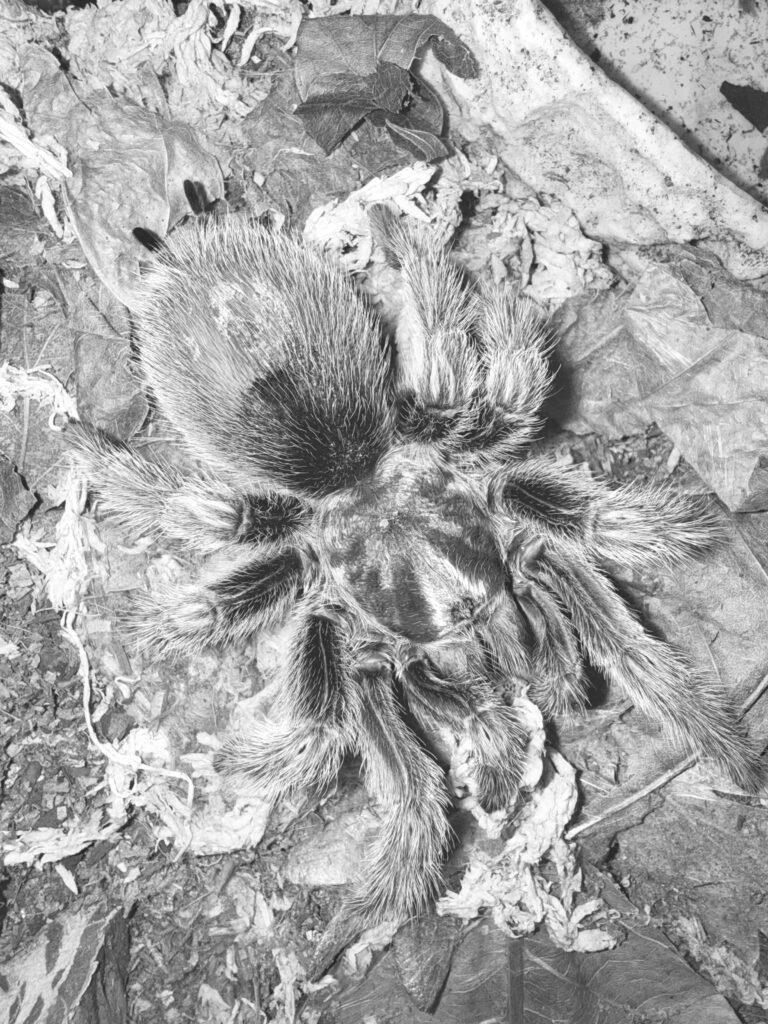
Project 2 Artists Response:
What drew me to want to sketch my Rose Hair tarantula was the variety of textures on her exoskeleton. I know we were supposed to use a dead bug, but since she barely moves, she was perfect to draw from observation. I was especially drawn to the fluffy texture of her legs and the soft, velvety look of her cephalothorax. I chose the angle I did because it was close-up enough to highlight the different textures I wanted to focus on.
One of the most challenging parts of this project was working with such a large piece of drawing paper. It was tough to get the darker shading right across that much space. But I think a success I had was showing the different textures in her exoskeleton accurately. I had a lot of fun adding in the heart-shaped urticating hairs on her legs and her chelicerae, which are the parts her fangs are attached to
My favorite featured artist was Do Ho Suh, who inspired me to use leaves and moss from my tarantula’s enclosure as materials to create the background. I was really drawn to how he rubbed over different textures in his apartment to reveal the layers of the space, and that gave me the idea to stamp broken leaf textures into my background using ink. I also used the moss to try out his rubbing technique by pressing and rubbing it on the cephalothorax to create a softer, velvety texture. I was also inspired by Cai Guo-Qiang to go beyond using just pencil and ink. So, I used the moss like a sponge to press ink into the background and add more texture. I loved that I didn’t just draw my tarantula and brought in natural parts of her environment to help create the piece.
Honestly, I think adults can learn just as much about drawing from young learners as children can from adults. Kids don’t worry about perfection and focus more on the sensory experience of drawing. Drawing is a form of art, and art isn’t about being perfect. It’s about the process, the creativity behind it, and the expression that comes through it. Especially with young learners, I think it’s important to encourage exploration of textures, shapes, and emotions rather than focusing on drawing something “accurately.” It’s more about discovery and connection than it is about precision.